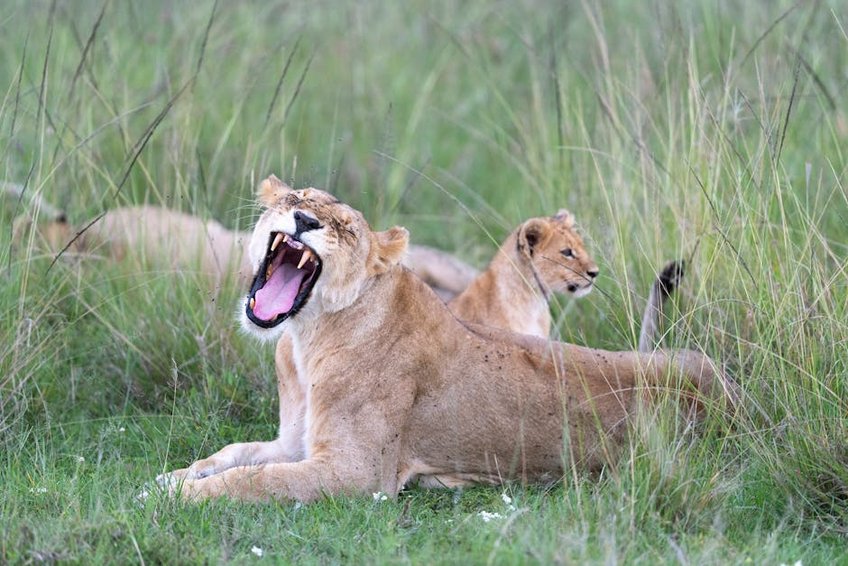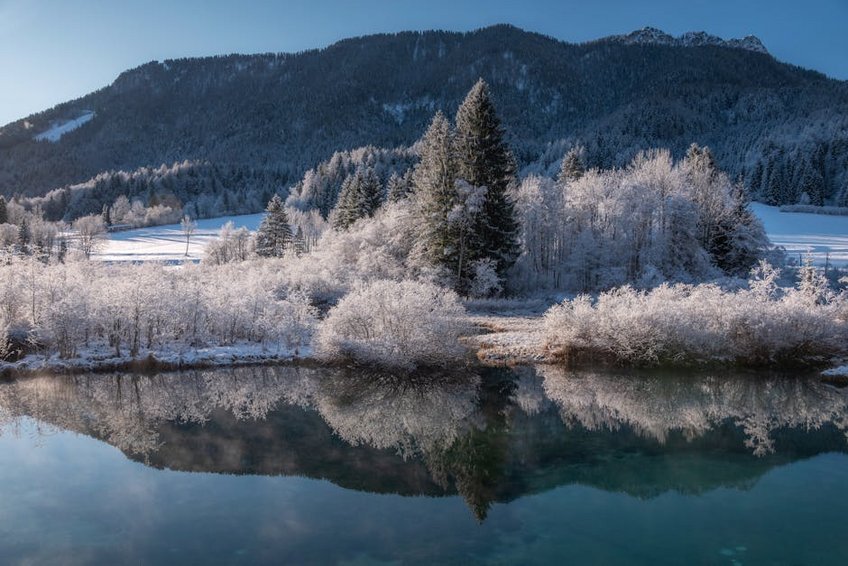Discovering the Untamed Wilderness of Liberia Sapo National Park
Liberia Sapo National Park stands as one of West Africa’s most pristine and biodiverse rainforest reserves, offering an unparalleled adventure for nature enthusiasts and eco-travelers. Located in southeastern Liberia, this protected area spans over 1,800 square kilometers of lush tropical forest, making it the country’s largest national park and a critical sanctuary for endangered species. You’ll find yourself immersed in a world where dense canopy layers shelter pygmy hippos, forest elephants, and countless bird species, creating unforgettable wildlife encounters. The park’s remote location ensures an authentic wilderness experience far from crowded tourist trails, perfect for travelers seeking solitude and natural beauty. Liberia Sapo National Park provides incredible opportunities for hiking, birdwatching, and cultural immersion with local communities. Visiting this remarkable destination supports conservation efforts while giving you a chance to connect with nature on a profound level. Prepare to be amazed by the raw, untouched landscapes that make Liberia Sapo National Park a hidden gem in Africa’s ecotourism landscape.
Liberia Sapo National Park Essential Information – What Every Traveler Should Know
Understanding Liberia Sapo National Park’s fundamental characteristics helps you plan a safe and rewarding journey into this extraordinary ecosystem. Established in 1983, the park represents Liberia’s commitment to preserving its natural heritage through sustainable tourism practices and community involvement. The rainforest ecosystem features diverse habitats including primary forests, swamps, and river systems that support incredible biodiversity. You’ll need special permits arranged through licensed tour operators since independent travel isn’t permitted within the park boundaries. Liberia Sapo National Park operates under strict conservation guidelines to protect its fragile environment and wildlife populations. Weather conditions remain tropical year-round with high humidity and temperatures averaging 25-30°C (77-86°F), though rainfall patterns significantly impact accessibility. The park’s remote location means limited infrastructure, requiring careful preparation and flexibility from visitors. Professional guides enhance your experience while ensuring safety during wildlife observations and forest explorations.
Park Geography and Ecosystem Overview
- The park covers 1,804 square kilometers in Sinoe County with elevation ranging from 100-500 meters above sea level across rolling hills and valleys
- Diverse habitats include lowland rainforest, gallery forests, swamps, and the Sinoe River system supporting unique aquatic life
- Critical conservation area hosting over 125 mammal species including endangered forest elephants, pygmy hippos, and seven primate species
- Budget travelers can expect costs around $800-1,200 per person for a 4-day trip including basic accommodations, park fees, and group tours with shared transportation from Monrovia
- Mid-range experiences typically cost $1,500-2,500 per person featuring better accommodations, private guides, and additional activities like specialized birdwatching or cultural visits
- Luxury expeditions range from $3,000-5,000+ per person offering premium lodgings, exclusive guide services, helicopter transfers, and customized itineraries with expert naturalists
- Liberia Forestry Development Authority – Official Park Management
- Lonely Planet Liberia Travel Guide
Visitor Regulations and Permit Requirements
All visitors to Liberia Sapo National Park must obtain permits through the Forestry Development Authority or authorized tour operators at least two weeks before arrival. These regulations help manage visitor impact while supporting conservation funding and local employment. You’ll need valid identification and possibly vaccination records depending on current health requirements. Guided tours are mandatory for all park activities with group sizes typically limited to eight people maximum. Strict rules prohibit littering, feeding wildlife, or removing any natural materials from the protected area. Night visits require special authorization and additional fees for enhanced guide services. These measures ensure sustainable tourism while protecting the park’s delicate ecosystems for future generations.
Planning Your Liberia Sapo National Park Adventure – A Comprehensive Guide
Organizing your Liberia Sapo National Park expedition requires careful consideration of seasonal patterns, budget allocation, and physical preparation for this demanding environment. The remote location means you must arrange transportation, accommodations, and guided services well in advance through reputable tour operators. You should allocate 4-7 days for a comprehensive experience that includes multiple activities and adequate travel time to and from the park. Physical fitness matters significantly since hiking trails can be challenging with uneven terrain, high humidity, and potential river crossings during your explorations. Packing appropriate gear including waterproof clothing, sturdy hiking boots, and mosquito protection ensures comfort throughout your adventure. Liberia Sapo National Park offers different experience levels from gentle wildlife viewing to demanding multi-day trekking expeditions. Working with experienced guides maximizes your safety while providing valuable insights into the park’s ecology and conservation efforts.
Best Time to Visit Liberia Sapo National Park
The optimal visiting period for Liberia Sapo National Park falls during the dry season from November through April when rainfall decreases significantly and trails become more accessible. December to February offers the most comfortable conditions with lower humidity, clearer skies, and excellent wildlife viewing opportunities as animals congregate around water sources. The short dry period in August provides another window though some trails might remain challenging after the heavy rains. Avoid the peak rainy season from May to October when flooding can close access roads and limit activities within the park. Morning visits typically provide better wildlife sightings since many species become more active during cooler hours before retreating during the heat of midday. Seasonal variations affect not just accessibility but also what you’ll experience, with bird migration peaks occurring at different times throughout the year.
Budget Planning and Costs for Your Trip
Essential Preparation Checklist
Thorough preparation significantly enhances your Liberia Sapo National Park experience while ensuring safety throughout your adventure. Begin by consulting your healthcare provider about recommended vaccinations and antimalarial prophylaxis at least 4-6 weeks before departure. Secure comprehensive travel insurance that covers emergency evacuation from remote areas and adventure activities. Pack quick-dry clothing in neutral colors, waterproof bags for electronics, and high-quality binoculars for optimal wildlife viewing. Physical conditioning through regular hiking prepares you for the challenging terrain and humid conditions within the park. Learn basic phrases in local languages and familiarize yourself with cultural norms to facilitate positive interactions with community members. Finalize all permits and bookings well in advance since availability remains limited during peak seasons.

Liberia Sapo National Park Top Attractions and Activities – Unforgettable Experiences
Liberia Sapo National Park delivers incredible diversity in attractions and activities that cater to different interests and adventure levels. Wildlife enthusiasts will marvel at the opportunity to observe rare species in their natural habitat including the elusive pygmy hippopotamus and several monkey species swinging through the canopy. The park’s extensive trail network offers hiking experiences ranging from gentle walks to challenging multi-day treks through pristine rainforest environments. Birdwatchers can spot numerous species including the white-breasted guinea fowl and various hornbills while exploring different elevations and habitats. River excursions along the Sinoe provide unique perspectives of the park’s aquatic ecosystems and opportunities for fishing with local guides. Night safaris reveal a completely different world of nocturnal creatures using specialized equipment provided by tour operators. Cultural interactions with nearby communities add depth to your understanding of the region’s heritage and conservation challenges.
Must-See Highlights and Wildlife Encounters
Several standout features make Liberia Sapo National Park particularly memorable for visitors seeking authentic wildlife experiences. The park’s elephant population, though elusive, represents one of West Africa’s most significant conservation successes with occasional sightings during early morning explorations. Pygmy hippopotamus observations occur more frequently near river systems during dusk hours when these rare creatures become more active. Primate enthusiasts will delight in spotting Diana monkeys, Campbell’s monkeys, and various colobus species moving through the forest canopy. The park’s bird diversity includes numerous endemic species that birdwatchers travel specifically to observe in their natural habitat. Ancient giant trees create breathtaking natural cathedrals while providing crucial ecosystems for countless smaller species. Waterfalls and natural pools offer refreshing breaks during hikes while showcasing the park’s beautiful aquatic features.
Hidden Gems and Local Favorites
Beyond the main attractions, Liberia Sapo National Park conceals several lesser-known treasures that provide more intimate experiences away from potential crowds. Local guides often know secret clearings where wildlife frequently gathers for better viewing opportunities without disturbance. Certain trails lead to spectacular viewpoints overlooking the vast rainforest canopy that few visitors ever discover. Seasonal mushroom foraging with knowledgeable community members introduces you to the forest’s edible treasures and traditional uses. Nighttime frog-watching excursions reveal an astonishing diversity of amphibian life using specialized lights provided by guides. Visiting nearby villages during traditional festivals or markets adds cultural context to your natural experience. These hidden aspects of Liberia Sapo National Park often become the most memorable parts of visitors’ adventures.
Liberia Sapo National Park Practical Travel Information – Navigating Your Journey
Practical considerations for visiting Liberia Sapo National Park involve understanding transportation options, accommodation choices, and essential services available in the region. Most visitors arrive via Monrovia’s Roberts International Airport before undertaking the 5-7 hour journey to the park entrance using various transportation methods. Road conditions vary significantly depending on season, with 4×4 vehicles essential for the final segments of the journey during any time of year. Accommodation options range from basic camping within the park buffer zone to comfortable eco-lodges offering modern amenities while maintaining environmental standards. Communication facilities remain limited with sporadic cellular coverage and no internet access within the park itself. Medical facilities are basic in nearby towns, emphasizing the importance of comprehensive travel insurance and personal medical kits. Understanding these practical aspects ensures a smoother, more enjoyable exploration of Liberia Sapo National Park.
| Category | Options/Features | Price Range (USD) |
|---|---|---|
| Accommodation | Basic camping, community guesthouses, eco-lodges with private facilities | $30-150 per night |
| Transportation | Shared minivans, private 4×4 vehicles, boat transfers | $100-400 round trip |
| Guide Services | Group tours, private guides, specialized naturalists | $50-200 per day |


